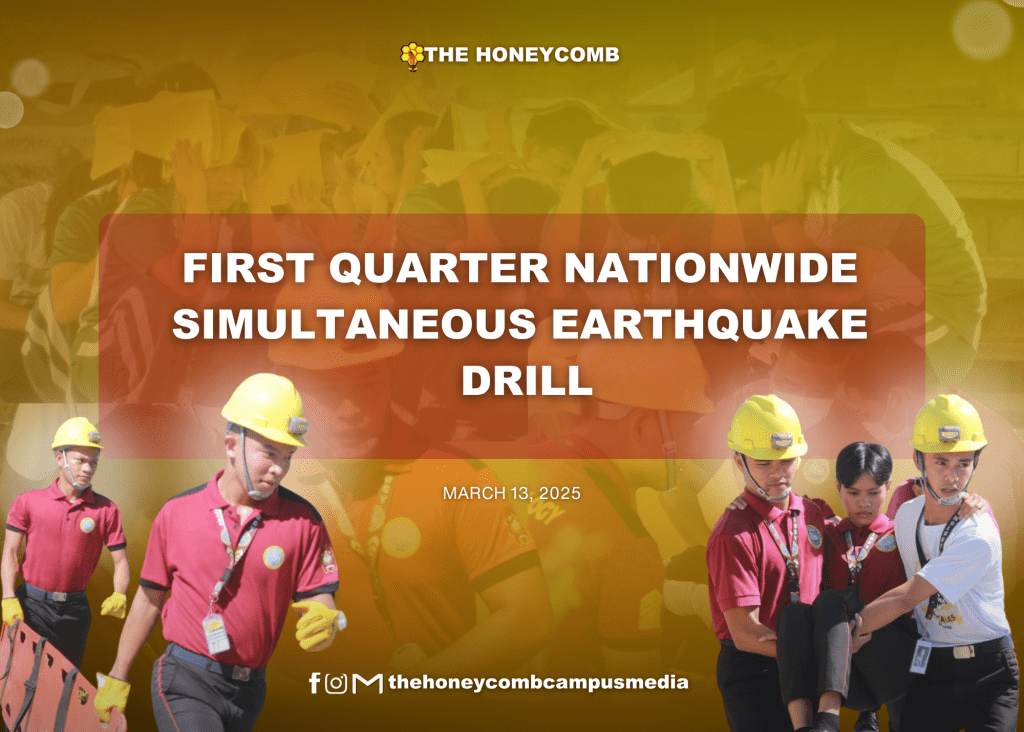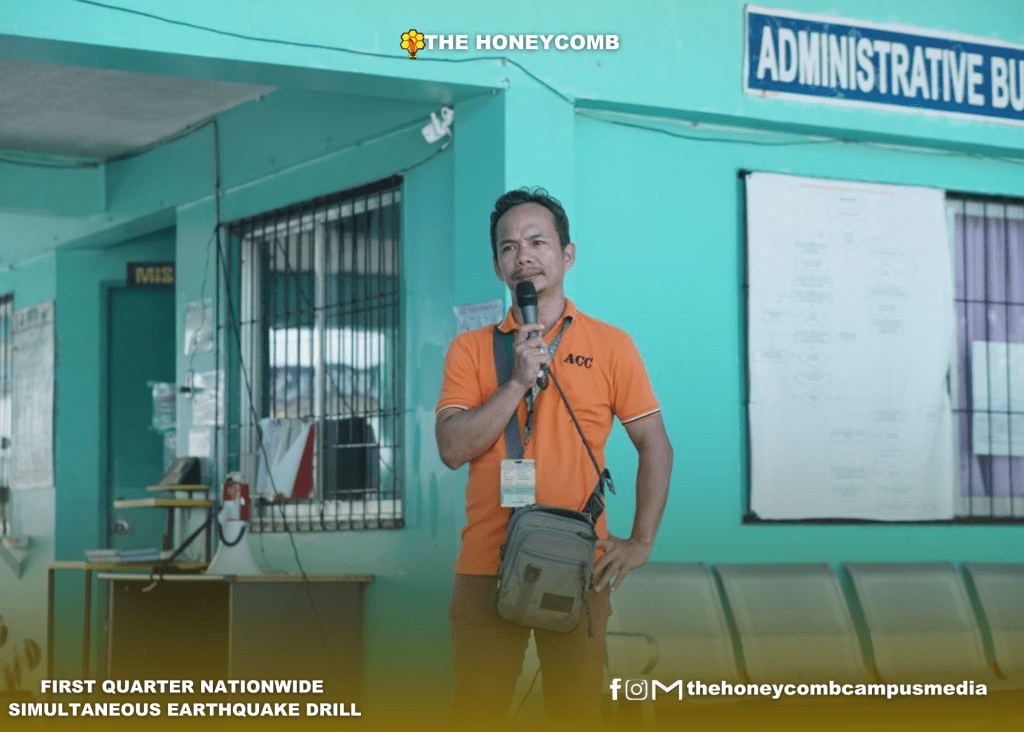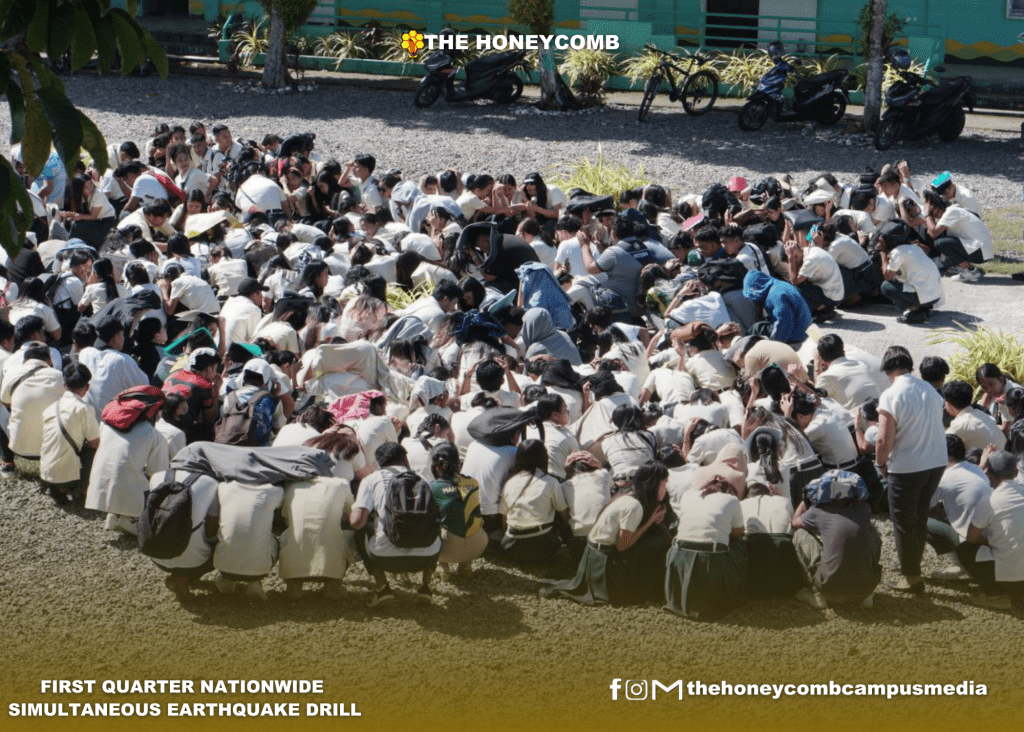ACC REDEEMS EARTHQUAKE DRILL WITH SECOND ATTEMPT
The ground trembled—not with disaster, but with discipline—as Abuyog Community College (ACC) actively participated in the First Quarter Nationwide Simultaneous Earthquake Drill (NSED) on March 13, 2025. As part of the nationwide initiative led by the National Disaster Risk Reduction and Management Council (NDRRMC), ACC’s drill aimed to instill a culture of safety and resilience.

The activity was spearheaded by the Local Disaster Risk Reduction and Management Office (LDRRMO) in collaboration with ACC’s Disaster Risk Reduction and Management (DRRM) Committee led by Prof. Mark Castanas.
The drill commenced at exactly 2:00 pm, however, the first attempt barely made a tremor in the consciousness of students and faculty, prompting a second round to reinforce the drill’s seriousness.
At the initial signal, a noticeable lack of urgency swept through the campus. Students leisurely ducked under desks, some chuckled, and a few were even glued to their phones. Faculty members, though cooperative, failed to project the gravity of the situation. It was a drill, after all—just another routine. But disaster preparedness is anything but trivial.
Realizing the lack of engagement, ACC’s Disaster Risk Reduction and Management (DRRM) coordinator called for an immediate redo. “If we treat this lightly, we might pay the price when the real thing happens,” said Prof. Castanas.

The second attempt was a wake-up call. This time, students took the “duck, cover, and hold” more seriously, and evacuation was executed with precision. Faculty members actively guided their students, ensuring proper adherence to protocols.

The drill served as a crucial reminder: complacency can be catastrophic. While earthquakes remain unpredictable, preparedness is within everyone’s control. “This is not just compliance; it’s survival training,” emphasized Prof. Castanas.
As ACC concludes its first-quarter earthquake drill, one lesson stands firm—when disaster strikes, there is no second attempt.
As earthquakes remain an ever-present threat in the Philippines, drills like these serve as constant reminders that preparedness is a responsibility shared by all.
The real challenge lies not in performing a drill but in internalizing the lessons it imparts—to remain vigilant, to respond swiftly, and above all, to value life in the face of uncertainty.
Because in times of disaster, the best defense is preparedness.




